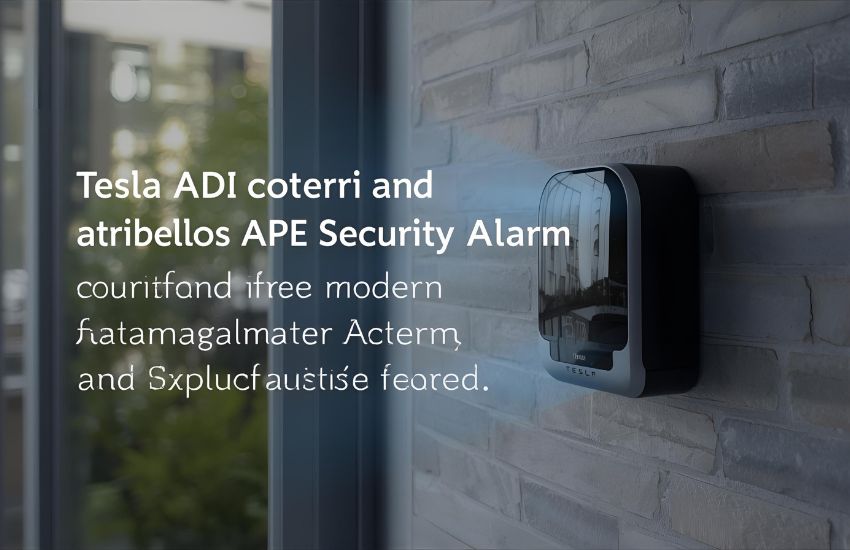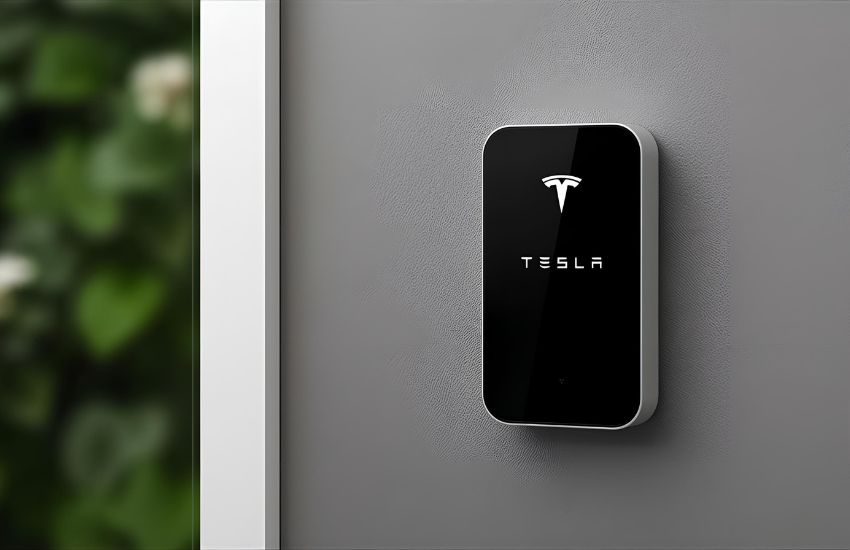What if your home security system could respond instantly to real-time events with smart precision? The Tesla API security alarm offers exactly that—an innovative approach to modern home automation by combining Tesla’s powerful API with customizable alarm systems. You can integrate sensors and devices, including those powered by Raspberry Pi, to create a flexible and intelligent security setup tailored to your needs.
The Tesla API Security Alarm integrates seamlessly with modern home automation systems, offering real-time alerts and remote control via smartphones. It enhances security by monitoring Tesla vehicles and connected devices, enabling instant responses to threats. This intuitive system improves overall safety and convenience, making it an effective solution for protecting homes with advanced technology.
In this blog, you will discover how the Tesla API security alarm transforms home security through effective integration, smart sensor management, and practical setup strategies—equipping you with the knowledge to enhance your home’s safety with cutting-edge technology.
Integrating Tesla API Security Alarm with Raspberry Pi and Home Assistant for Seamless Automation

Leveraging the Tesla API Security Alarm in Your Home Automation Setup
Integrating the Tesla API security alarm into your home automation system elevates your property’s safety to a new standard. By utilizing Tesla’s powerful API access through a Raspberry Pi, you can create a customized security alarm project that reacts instantly to threats. This approach enables you to trigger alarm actions such as the horn of a Tesla, headlights and horn activation, or notifications directly to your mobile device, ensuring real-time response and escalation.
Why Raspberry Pi and Home Assistant Are Ideal for Tesla Integration
You can harness the flexibility of the Raspberry Pi combined with Home Assistant to manage your Tesla integration effectively. Home Assistant acts as the central dashboard for your home automation, allowing you to control security cameras, outdoor motion sensors, and video surveillance with ease. The Raspberry Pi serves as an affordable, compact, and programmable hub where you can deploy the open-source TeslAPI project. Using Python programming language on this platform, you communicate with the Tesla API to start and stop alarm cycles, control detectors, and escalate notifications based on security events.
Implementing the Tesla API Security Alarm Using TeslAPI and Python
To begin your DIY security alarm system, you’ll utilize the TeslAPI open-source project hosted on GitHub. This tool simplifies programming interactions with your Tesla model, providing robust API functions tailored for security automation. By running TeslAPI on your Raspberry Pi, you can script alarm cycles and alarm actions that integrate seamlessly with your existing security cameras and outdoor motion sensors. This setup ensures your alarm system not only monitors threats but also reacts with audible and visual deterrents, such as activating the horn of a Tesla or the headlights and horn, enhancing the overall security experience.
Enhancing Security with Notifications and Escalation Levels
A well-designed Tesla API security alarm system offers flexible escalation levels, enabling you to customize how and when you receive alerts. Whether it’s a simple notification on your smartphone or an automatic alarm cycle involving Tesla’s built-in deterrents, you control the escalation based on the detected threat level. This intelligent escalation provides you with peace of mind, knowing that your alarm system can adapt and respond appropriately while leveraging the cctv camera pros and outdoor motion sensor capabilities integrated into your home automation.
By combining the Tesla API security alarm with a Raspberry Pi and Home Assistant, you create a sophisticated, programmable security solution tailored to your needs. This integration not only provides immediate threat detection and response but also offers a highly customizable platform for future enhancements in home automation and video surveillance.
See more about…Android IP Camera App,
Essential Wiring and Sensor Setup for an Effective Tesla Alarm System

When setting up an effective Tesla alarm system, proper wiring and sensor configuration are crucial to ensure enhanced security and seamless operation. If you are a Tesla owner, especially of a Model 3 Tesla, and you’re using Raspberry Pi as the controller for this project, understanding the wiring layout and sensor integration will be fundamental. This project uses a Raspberry Pi connected to various components such as relays, motion detectors, and power supplies, all carefully wired to create a responsive alarm system.
First, familiarize yourself with the teslapi.py script, which serves as the backbone of your Python programming language interface to communicate with your Tesla. Before you can send commands or configure your setup, you must complete the login process using your Tesla credentials. Once logged in, the system can monitor if the car is parked and obtain GPS location data, enabling smart triggers for your alarm.
The wiring must be organized to connect motion detectors and relay modules to the Raspberry Pi’s GPIO ports. These sensors detect unauthorized movement, and through the relay, you can activate alarm components or send notifications. You will plug these components carefully to the power supply and controller, ensuring the connections are secure and properly insulated.
The setup is highly configurable and customizable, allowing you to tailor alarm responses depending on your security needs. Whether it’s triggering a siren, flashing lights, or sending alerts, you can customize these alarm actions via the Python programming language scripts. Because the wiring and sensors form the physical foundation of your security alarm system, take time to plan and test each connection to guarantee reliable operation.
For Tesla owners who are not only building this project for fun but also seeking enhanced security, a clear understanding of wiring and sensor setup is indispensable. Complementing this with a well-made video demo can provide practical insights, helping you visualize the assembly and ensure that your alarm system delivers consistent performance.
By mastering the essential wiring and sensor configuration, you create a robust and configurable Tesla alarm system that integrates smoothly with your Model 3 Tesla and your broader home automation ecosystem.
See more about…AI Security Camera Person Intrusion
Conclusion
In conclusion, building a production ready Tesla alarm system using Raspberry Pi and the teslapi.py script offers Tesla owners a powerful and customizable security solution. By integrating essential components such as motion detectors, relays, and carefully planned wiring with intuitive addons like the gps.py script, you enhance both functionality and control. The system using output terminals ensures reliable hardware connections, while recent updates continue to improve performance and ease of use. Incorporating features like Teslacam further enriches your security setup, making this alarm project not only effective but also seamlessly integrated with your Tesla ecosystem.
See more about…AI Chat Bot
Frequently Asked Questions (How Tesla API Security Alarm Enhances Modern Home Automation and Security Solutions)
What is the Tesla API Security Alarm and how does it fit into home security?
The Tesla API Security Alarm exposes vehicle and home-device telemetry (motion, door/window, GPS, cameras) and alarm controls via authenticated endpoints. Integrated into home security, it acts as an extra sensor/actuator—providing real-time event data and remote alarm triggers that augment traditional alarm systems and smart hubs.
How does it enhance home automation and routines?
By feeding real-time vehicle and sensor events into automation platforms (webhooks, MQTT, Home Assistant), the API can trigger routines: arm alarms when a car leaves, switch lights on when an alarm activates, or start camera recording on geofence breach—creating contextual, cross-device automations that reduce false alarms and improve responsiveness.
What concrete security advantages does it provide?
It supplies additional sensing (vehicle proximity, cabin intrusion, tow alerts), low-latency notifications, remote siren/lock control, and corroborating telemetry (GPS + camera). Combined, these reduce detection gaps, speed incident response, and enable richer forensic logs (timestamps, locations, media) for verification and law enforcement follow-up.
What must installers and users consider (privacy, reliability, best practices)?
Use secure OAuth/token storage, TLS connections, and rate-limit handling. Prefer official APIs or vetted integrations, failover automation for connectivity loss, and clear user consent for telemetry sharing. Minimize shared data, rotate credentials, and test automations to avoid unsafe triggers or privacy leaks while maximizing reliability and auditability.
